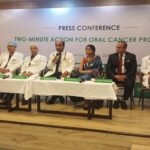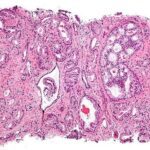Being aware of the symptoms and making lifestyle changes is imperative
New Delhi, January 10, 2019: The global cancer burden is estimated to have risen to 18.1 million new cases and 9.6 million deaths in 2018, according to a recently released report by the WHO. One in 5 men and one in 6 women worldwide develop cancer during their lifetime, and one in 8 men and one in 11 women die from the disease. Worldwide, the total number of people who are alive within 5 years of a cancer diagnosis, called the 5-year prevalence, is estimated to be 43.8 million.
Cancers of the lung, female breast, and colorectum are the top three cancer types in terms of incidence and are ranked within the top five in terms of mortality (first, fifth, and second, respectively). Together, these three cancer types are responsible for one third of the cancer incidence and mortality burden worldwide.
Speaking about this, Padma Shri Awardee, Dr KK Aggarwal, President, HCFI, said, “The prevalence of cancer in our country is not uniform all over. There is a difference in the types of cancer that affect people basis rural and urban settings. We have seen that in rural women, cervical cancer is the most widespread while in urban women, breast cancer is the most rampant. In case of men, rural people are majorly affected by cancers of the oral cavity while rural men are greatly inflicted by cancer of the lung. Cancer has become an epidemic with a steep rise in the incidence of the disease. However, the irony is that cancer medicines are very expensive and beyond the reach of a common man. Thus, price control is very necessary to provide people with affordable cancer medicines.”
Cancer is the name given to a collection of related diseases that are caused when a group of abnormal cells begins to grow uncontrollably, often forming a tumor. A recent study has indicated that cancer cells alter the body clock to boost tumor growth and survive conditions that would kill normal cells.
Adding further, Dr Aggarwal, who is also the Group Editor-in-Chief of IJCP, said, “Although the exact cause of cancer is not known, research indicates that certain risk factors may increase a person’s chances of developing cancer. These include things people cannot control, like age and family history. Lifestyle choices that increase your chances of contracting breast cancer are the usual suspects such as smoking, obesity, lack of exercise and poor diet.”
There are four major types of clinical preventive care: immunizations, screening, behavioral counseling (lifestyle changes), and chemoprevention. Screening is the identification of an asymptomatic disease, unhealthy condition, or risk factor. Primary prevention are interventions to keep disease from occurring (e.g., immunization for communicable disease); secondary prevention as detection of early asymptomatic disease (e.g., screening); and tertiary prevention as reducing complications of disease (e.g., eye examinations in patients with diabetes). This nomenclature is applied differently by some other disciplines.
Here are some ways in which one can diagnose and prevent the onset of this condition at an early stage.
- Pay attention to symptoms and get yourself checked regularly.
- Using any type of tobacco puts a person at an increased risk of cancer. Avoiding or stopping the consumption of tobacco is one of the foremost steps in cancer prevention.
- Filter tap water properly as this can reduce your exposure to possible carcinogens and hormone-disrupting chemicals.
- Get vaccinated on time and as per schedule. For example, the Human Papilloma Virus (HPV) vaccine helps prevent most cervical cancers and several other kinds of cancer.
- Drinking plenty of water and other liquids can help in reducing the risk of bladder cancer by diluting the concentration of cancer-causing agents in urine and helping to flush them through the bladder faster.
- Most importantly, make lifestyle changes such as eating a healthy diet and getting regular exercise. Fruits and vegetables are rich in antioxidants which can help ward off diseases.







